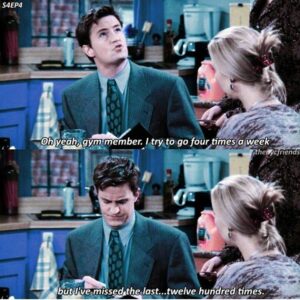Deadlifts are one of the most effective functional strength exercises you can do. But, often people are more than a little apprehensive about the deadlift, and often for good reason! The truth is how you perform an exercise is just as important (if not more so) than what that exercise is.
HERE ARE 5 SIMPLE RULES THAT WILL ENSURE YOU’RE PERFORMING YOUR DEADLIFTS SAFELY AND EFFECTIVELY!
1. PICK THE CORRECT WEIGHT!
This is important and lifting with your ego is a fantastic way to hurt yourself. You see those super strong men and women lifting big weights? They earned that level of strength through consistent training, you should. Make small, consistent increases in weight to get stronger. Adding an extra plate to the bar too soon isn’t impressing anyone!
2. DON’T LET THE BAR MOVE FORWARD!
This is one of the most common errors in the deadlift, and typically happens when you ‘squat’ to assume the starting position rather than ‘hinge’(3). When you are in this squat position, the shins will move forward as you lift the bar causing it to swing forward of the body. We want the bar to move directly over the mid foot in a vertical line, if the bar moves forward even by a few inches, it’s dangerous. Lifting a load that isn’t balanced over the mid foot leads to lumbar flexion and increases the risk of disc injury substantially(1).
3. DON’T LIFT YOUR HIPS TOO EARLY!
This usually happens on a heavy weight when you try to lift the weight quickly, which is why point 1 is so important. When the hips lift early, it effectively turns the deadlift into a stiff-legged deadlift. This reduces the contribution from the quadriceps and places more stress onto the hamstrings and low back(2). Trying to lift a heavy weight with less muscle mass involved is a potential injury risk, it also leads to missed reps and a bruised ego!
4. KEEP YOUR BACK IN EXTENSION!
I know, you know! But it needs to be said! But many gym goers fail to do this, or they do it for the first reps of a set but relax towards the end. Some people also find this step difficult, especially older persons(3). Some small degree of rounding is acceptable, under the right circumstances. However if you are unable to achieve extension in your deadlifts, consider raising the bar off the ground on some weight plates or even performing rack pulls instead(4).
5. LOWER THE BAR PROPERLY!
This is something far too many get wrong. Don’t bend your knees and try to squat the weight down! If you do this your back will round as the bar passes the knees, exposing you to an injury risk in the same way as the bar swinging forward does(1). To lower the barbell, push your hips back until the bar passes the knees, then lower in a vertical line in front of the shins. Don’t let go of the bar, but this should be a controlled drop rather than a slow lower. You want to conserve energy for the actual lifting. Don’t drop the bar from the top, just don’t. Ever.



